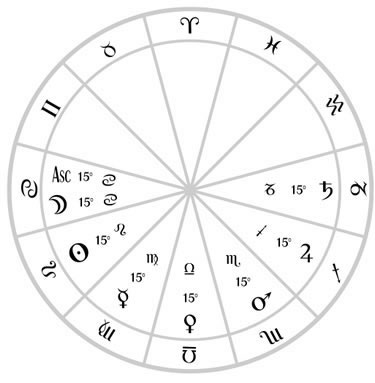In this special edition of Planet Waves FM, I explore one of the most commonly asked questions about “general” readings — how does the astrologer make them specific? How can we get any detail at all, just knowing someone’s Sun sign? (By the way I just heard a ridiculous verbal typo – toward the beginning, I say the word ‘simultaneously’ when I mean ‘synonymously’. It’s an interesting blend of concepts anyway, as one implies time and the other implies meaning.)

The Thema Mundi, the key to the logic of astrology, including rulership, aspects, house meanings and the basic order of the solar system. It is probably modern astrology's oldest artifact besides mythology itself, dating back to ancient Greece.
This discussion will be interesting for both astrology fans and astrology students. I describe the solar house system, which counts the houses off of the Sun, and the whole sign house system, which uses the whole sign as a house. I also describe how astrology is a holographic art — and because I am using a whole chart for each of the readings, I can interpret a complete story that you can relate to.
Technical note: “ascendant,” “1st house” and “rising sign” are all the same thing, for our purposes here.
There are a few resources that might help ease your way, if you want to go deeper into understanding the astrological houses. One is a basic description of house meanings. Here is another one, that focuses on sexual themes through the houses. In this article from way back when the Internet was young, I describe how horoscope writers use the solar houses and whole sign houses. Finally, in this article from Cosmic Confidential, I describe my holographic method of reading for the signs, which allows the use of a full chart — granted, a simpler chart — and why it helps that an astrologer sees the whole chart and creates a cohesive narrative. That, I think, is the key. Okay so — just thought of one other, one that skips back into the earliest history of astrology as we know it in old Greece – the Thema Mundi. The Thema Mundi may be modern astrology’s oldest artifact. It’s a single chart, a teaching chart, that describes the logic system behind astrology.

